The Allies didn’t have “a” plan to wage the Battle of the Atlantic, and neither did the Germans. The Battle of the Atlantic was a complex battle of attrition on a gigantic scale which lasted all the way from September 1939 to May 1945, and it was characterized by constant changes of plans and tactics and weaponry on both sides as it progressed, with each side trying to overcome every new enemy development with a suitable counter-development. The campaign see-sawed several times, with one side or the other gaining the advantage at various points; some methods of waging the campaign became ineffectual as time progressed, but were highly effective in earlier stages and therefore were entirely correct to use at those points.
On this day during W.W. 2
-
February 4, 1942. Eastern Front
The Wehrmacht continues its painful attempt to restore its front, or at least communications to its most isolated units, on 4 February 1942. The Rollbahn between Yukhnov and Gzhatsk has been cleared, restoring access to the Fourth Army, but many other large units remain blocked from receiving supplies. In the most important movement today, Ninth Army’s 46th Panzer Corps advances through blizzards from Sychevka toward Rzhev in order to establish another line of communications to the Fourth Army. If it succeeds in this 30-mile advance, it will create a line in the northwest that will trap large Soviet forces west of the Rollbahn in its own pocket. The Germans optimistically hope to confine and eliminate Soviet 39th Army in this area southeast of Rzhev, but the German hold is weak everywhere and a focused Red Army effort in virtually any direction would at the very least enable the Soviet troops to break out. However, the Stavka is not interested in breakouts at this time and the Red Army local commanders hold a large swathe of territory in which they receive air supply and also supplies through the porous front. It is a peculiar situation in which both sides consider themselves, with some justification, to be on the offensive, only operating in different directions.
Source: worldwartwodaily

-
February 3, 1944 Eastern Front
In Moscow… The encirclement of German forces in the Korsun pocket is announced and celebrated.
From Berlin… Hitler orders the troops in the Korsun pocket are not to retreat.
Army Group South (Manstein) assembles an armored force to relieve the Korsun pocket.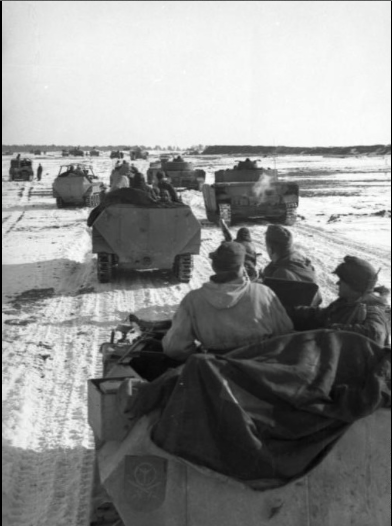
-
man, i bet they weren’t too enthusiastic to be taking part in that. That just looks, well…not good
-
@barnee Yeah, that doesn’t look like a very good time…
-
The Tol Plantation Massacre - 4th February 1942
Rabaul was the capital of Australian-mandated New Guinea and was protected by a tiny garrison consisting mainly of the 2/22nd Australian Bn - “Lark Force”.
The town was quickly routed by a massive Japanese fleet of carriers, destroyers, submarines and fighter and bomber aircraft.
When the order “every man for himself” was given, soldiers and civilians fanned out over New Britain looking for escape routes through the most rugged terrain imaginable.
Some endured an epic trek through dense jungle, battling malaria, dysentery, tropical ulcers, leeches, exhaustion, malnutrition and crocodile-infested rivers, to eventually reach points where they were able to escape on small boats.
But this was not the majority, including those who reached Tol Plantation hoping to be rescued.
To their horror, five barge-loads of Japanese troops were on the beach to meet them.
There was no option for the starving, exhausted, virtually unarmed Australians but to surrender. At first it seemed they would be treated as normal PoW’s. Then an order to execute the PoW’s was given.
Red Cross brassards were ripped off medics. Men were trussed together in small groups with fishing line or ropes and taken into the jungle and slaughtered.
They stood or sat listening to their mates’ death cries, awaiting their own fate by blade or bullet.
The few survivors told of grinning Japanese soldiers emerging from the bush wiping blood from their bayonets and beckoning their next targets.
Some victims were asked if they wanted to be shot or bayoneted, a majority chose to be shot only to be bayoneted. Two wounded men found alive in Waitavalo Plantation homestead had been smeared in pig grease to be burned alive in the house.
Requests for final cigarettes were refused. Some men prayed, some begged for their lives, others said cheerio to their mates.
They were covered in palm leaves and left to die. Incredibly, several men feigned death and survived to tell the story.
Pte Billy Cook, 2/12 Australian Field Ambulance survived 11 bayonet wounds. He wrote:
“The first stab knocked us down. The Japs stood over us stabbing madly. I received six wounds in the back, two just missing the spine, two more breaking ribs…
“As the Japanese were moving off, the man next to me groaned. One of the Japanese soldiers came running back and stabbed him once more. By this time I could hold my breath no longer. When I drew a deep breath the soldier heard me and inflicted four more bayonet wounds.
“The last thrust went through my ear into my mouth, severing an artery on the way. Seeing the blood gushing out of my mouth, he assumed that I was at last dead, he covered the three of us with coconut fronds and vine leaves and left.”
Cook somehow crawled off into the jungle, as did five other survivors, and eventually was evacuated from New Britain to Port Moresby with 156 soldiers, sailors and civilians aboard the overcrowded government yacht, the Laurabada.
Approximately 160 members of “Lark Force” were massacred.
An estimated 1,053 of the troops and Rabaul residents who remained in the town or who were captured would eventually perish as prisoners when their prison ship, the Montevideo Maru, taking them to Hainan then occupied by Japan, was sunk by mistake by a US submarine " USS Sturgeon", off the Philippines on the 1st July 1942.
After the war some remains were retrieved, and buried at Rabaul’s beautiful Bita Paka war cemetery, but the bones of others are still in the jungle soil of a place whose name most Australians and British have never heard of.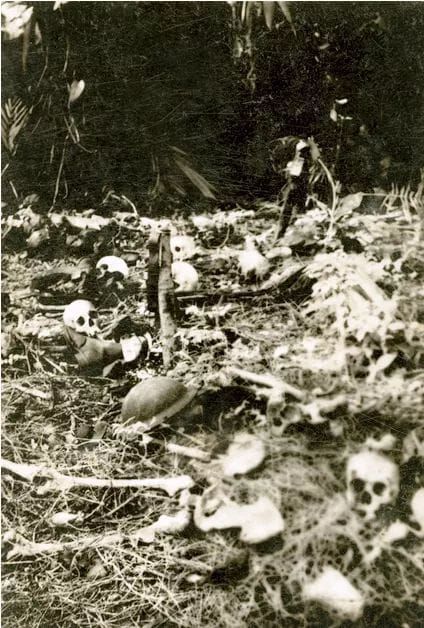
-
On this day in 1944, Field Marshal Manstein begins his relief attempt to break the Korsun–Cherkasy Pocket.
Six German divisions were surrounded. Though many trapped men escaped, they had to leave nearly all of their equipment behind, with heavy losses.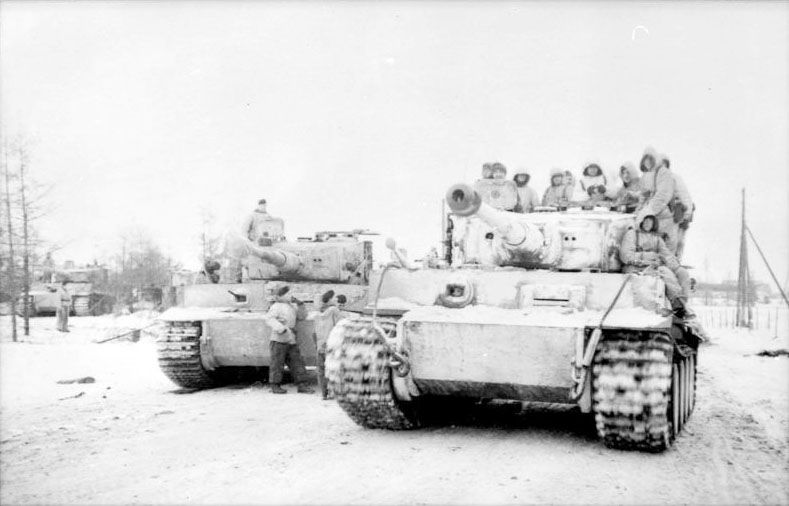
-
@captainwalker said in On this day during W.W. 2:
On this day in 1944, Field Marshal Manstein begins his relief attempt to break the Korsun–Cherkasy Pocket.
Six German divisions were surrounded. Though many trapped men escaped, they had to leave nearly all of their equipment behind, with heavy losses.Interesting. This engagement sounds like an Eastern Front counterpart to the Falaise Gap engagement on the Western Front, in August of the same year. A similar number of German troops were encircled, and like the ones at Cherkasy-Korsun they left vast amounts of equipment behind in order to escape.
-
yea actions such as those is why I have no problem with japan being nuked
-
February 6, 1942. Eastern Front
The Germans have avoided disaster by reopening supply lines to the Fourth Army and other large formations that were isolated by the Soviet counteroffensive around Moscow in December and January 1942. However, large forces remain surrounded at Kholm and Demyansk and there are no plans to relieve them anytime soon. Instead, the Germans have decided to supply them by air in the first sustained airlift in military history. Hitler is solidly behind this idea, though his underlings sometimes advise him that the planes could be better used elsewhere and the pockets are unsustainable. The airlift is hampered by the absence of airfields, so many of the supply efforts must be made by airdrops. These drops are not always accurate, and fierce battles develop as both sides attempt to recover the crates in the contested fringe areas. Overall, though, the airlift idea works, though life inside the pockets is grim and the defences barely hold. The Red Army also has troops behind German lines, most notably south of Rzhev, and they, too, survive only with airlifts. There Germans are astonished to see the Red Air Force transports landing within view and in all kinds of weather.
Source: worldwartwodaily
-
February 7, 1942. Eastern Front
Soviet counteroffensive is running out of steam in a series of ragged engagements west of Moscow. German Gruppe Scherer continues to hold Kholm, supplied by airdrops, in the rear of Soviet 3rd Shock Army which is held up at the town of Velikie Luki. Germans hold a giant salient from Vyazma to Rzhev but Soviet infantry, cavalry and parachute attacks all fail to cut the supply route through Vyazma. Moreover, Model’s German 9th Army at Rzhev has cut off Soviet 29th and 39th Armies, which were themselves trying to surround Rzhev.
Siege of Leningrad Day 153. Soviet offensive northwest of Moscow to relieve Leningrad is also stalling out. Germans hold another salient south of Lake Ilmen, from their railhead at Staraya Russa to Demyansk. Soviet 11th Army, 34th Army, and 3rd Shock Army press in on the German defences.
After a month of vicious fighting, Finnish II Army Corps (General Laatikainen) recovers the town of Krivi, Maaselkä Isthmus (north of Lake Onega), from the Soviet 367th Rifle Division. Finnish reinforced 19th Brigade (Col. Kai Savonjousi) leads the final charge. The battle begins at 03:00 and lasts until 14:45. There are at least 4000 Soviet dead and only 152 prisoners, while the Finns lose 12 missing or killed. Further south, Soviet ski troops attack the town of Poventsa (Povenets) but are pushed back. These actions restore the Finnish lines from before the Red Army’s winter offensive and secure the Finnish eastern flank north of the lake.
Source: worldwar2daybyday and worldwartwodaily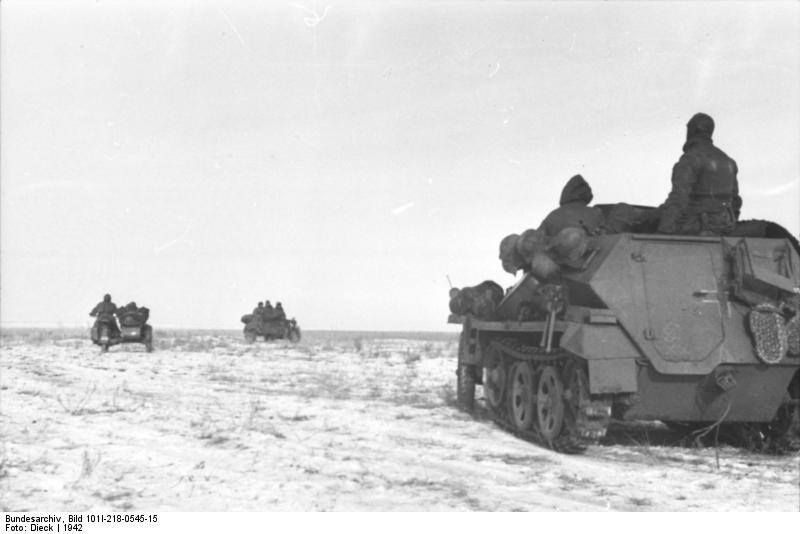
-
February 8, 1942. Eastern Front
While the German troops in Demyansk have been isolated for some time, 8 February 1942 is regarded as the date on which the pocket there forms. The Soviets are under the command of General Kurochkin. Encircled are about 90,000 Wehrmacht troops and around 10,000 auxiliaries under the command of II Corps (General Walter von Brockdorff-Ahlefeldt). These men are members of the 12th, 30th, 32nd, 123rd and 290th infantry divisions, and the SS Division Totenkopf, as well as the Reich Labour Service, Ordnungspolizei (uniformed police), Organisation Todt, and other auxiliary units. Many have been swept into the pocket by the advance of the Soviet Northwest Front under the command of General Lieutenant Pavel Kurochkin.
The Red Army successfully has severed the Demyansk position, which has been forbidden to withdraw due to Hitler’s “stand fast” orders, from its railhead at Staraya Russa south of Lake Ilmen. While the Soviet advance has severed the German lines of communication, it has not captured any major German fortified positions, and eliminating the Demyansk pocket turns into their best chance to do that. The Luftwaffe already has an air supply to Demyansk in progress under the command of Luftflotte 1. Unlike some later and notorious airlifts, the Demyansk airlift (and the contemporaneous one to the smaller trapped garrison about 62 miles (100 km) to the south at Kholm) is successful. This is because it benefits from relatively short flights and a lack of concentrated Red Army anti-aircraft fire in the forested areas surrounding the pocket.
Photo: A Soviet Aerosan RF-8/GAZ-98 snowmobile in action, February 1942.
Source: worldwartwodaily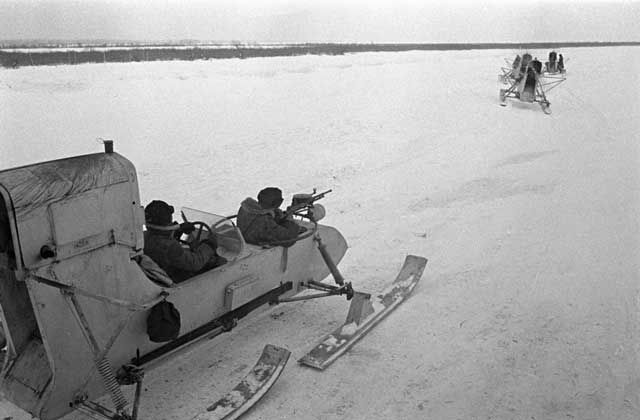
-
cool looking snomobile. Can’t tell how it propels itself though
-
@barnee It’s got a propeller in the back of it. Kind of like a swamp buggy, but for snow.
-
ahh cool. Like an airboat. Must’ve been pretty loud. I know the boats are
-
February 9, 1942. Eastern Front
The Luftwaffe airlift to the encircled German garrison at Demyansk and Kholm is underway. The German troops in the larger pocket at Demyansk, II Corps, have reported that they require 300 tons of supplies every day to survive. This is a lot of supplies to ferry, considering that every Junkers Ju-52 could only carry about one ton of supplies. The transports are slow and very vulnerable to the Red Air Force fighter attack, so they have to fly in “convoys” of 20 to 40 planes with fighter cover. The airfields within the Demyansk pocket are under sustained bombing attacks, which makes landings difficult at best and sometimes impossible. In the latter situation, the cargo containers are dropped through the bomb bay doors with parachutes and sometimes drift into enemy territory. Early indications are that the airlift will never reach its goal of 300 tons of supplies, but may barely carry enough to keep the soldiers fighting until they can be relieved.
Source: worldwartwodaily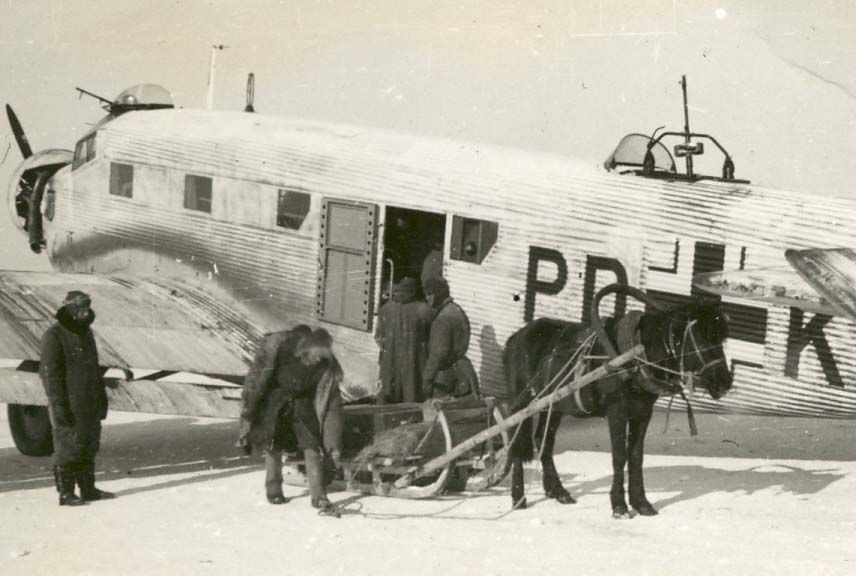
-
February 10, 1942. Eastern Front
The Wehrmacht has suffered serious losses during the winter when they had planned on building up their forces during an inactive period. This is due to the successful Red Army counteroffensive which began around Moscow and spread both north and south. Army Group Centre takes 110,000 casualties during February and receives 70,000 replacements. Since the Soviet counteroffensive began in early December, the Army Group is short 227,000 troops. About a quarter of the replacements are men returning from hospitals, while many of the others are untrained men who previously have been deferred.
Romanian dictator (Conducător) Ion Antonescu arrives in Rastenburg, East Prussia, for a two-day visit with Adolf Hitler. Romania is the Reich’s only source of natural oil and also has a well-respected army which incurred heavy casualties taking Odessa in 1941. Hitler already is thinking ahead to the summer campaign and presses Antonescu to provide large formations for a major offensive in the Army Group South sector. Antonescu agrees but asks for modern weaponry and the transfer of northern Transylvania from Hungary, which would reverse the Second Vienna Award of 30 October 1940. Hitler basically replies that he will think about both requests but he ultimately never grants them. This is a reminder to everyone that Romania and Hungary are almost more interested in fighting each other over their conflicting claims in Eastern Europe as they are in defeating the Soviet Union. Throughout the war, Romanian and Hungarian units are always separated by Wehrmacht formations.
Source: worldwartwodaily
-
@captainwalker I knew about the Romanian/Hungarian animosity from playing an 80s Hex led counter game: Barbarossa. You could never stack those two German allies, because of it. I have a few Osprey books on those two nations, as I always found interesting the units that served alongside the Wehrmacht.
They really were fighting with outdated equipment, so were always an easier target for the Russians. -
February 10 1945 –Hell in the Hürtgenwald The Battle of Hürtgen Forest
Into the Hurtgen Forest for the first time since December 1944. Although its progress was hampered by rough terrain and dense forests that limited movement as well as artillery and tactical air support, the 78th Division finally reached the dam on 9 February.
In early February, American forces attacked through the Hürtgen Forest for the final time. On 10 February 1945, the Rur Dam was taken by American forces and the Forest itself was not cleared until the 17th when the 82nd Airborne Division reached the Roer River. Although the Germans had jammed open the dam’s floodgates a day earlier, flooding the Rur Valley and delaying the U.S. advance to the Rhine for two further weeks, until 23 February, when the flood waters had receded.
The Americans suffered 33,000 casualties during the course of the battle which ranged up to 55,000 casualties, included 9,000 non-combat losses and represented a 25 percent casualty rate. The Germans had also suffered heavy losses with 28,000 casualties — many of these were non combat and prisoners of war.
-
This post is deleted! -
February 11, 1942. Eastern Front
Who exactly remains on the offensive on the Eastern Front remains murky. The Wehrmacht has been re-establishing communications to its trapped units in the east at the same time that the Red Army is still on the move to the west. Recognising that things have stalled, the Stavka now orders the 3rd and 4th Shock Armies of the Kalinin Front to resume their advance south of Lake Ilmen on 12 February. The plan is to tighten the Red Army’s grip on the Demyansk Pocket and, once it is further isolated, attack it directly.
Source: worldwartwodaily






